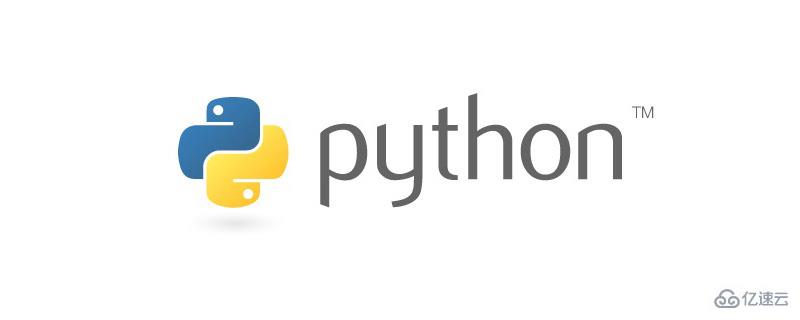您好,登錄后才能下訂單哦!
您好,登錄后才能下訂單哦!
這篇文章主要介紹“Python數據類型之numpy使用實例分析”的相關知識,小編通過實際案例向大家展示操作過程,操作方法簡單快捷,實用性強,希望這篇“Python數據類型之numpy使用實例分析”文章能幫助大家解決問題。

| 類型名 | 類型表示符 |
|---|---|
| 布爾型 | bool |
| 有符號整數型 | int8 / int16 / int32 / int64 |
| 無符號整數型 | uint8 / uint16 / uint32 / uint64 |
| 浮點型 | float16 / float32 / float64 |
| 復數型 | complex64 / complex128 |
| 字符型 | str,每個字符用 32 位 Unicode 編碼表示 |
import numpy as np
arr = np.array([1, 2, 3])
print(arr, arr.dtype)
arr = arr.astype('int64')
print(arr, arr.dtype)
arr = arr.astype('float32')
print(arr, arr.dtype)
arr = arr.astype('bool')
print(arr, arr.dtype)
arr = arr.astype('str')
print(arr, arr.dtype)如果希望 ndarray 中存儲對象類型,numpy 建議使用元組存儲對象的屬性字段值,然后把元組添加到 ndarray 中,ndarray 提供了語法方便處理這些數據。
import numpy as np
data = [
('zs', [99, 98, 90], 17),
('ls', [95, 95, 92], 16),
('ww', [97, 92, 91], 18)
]
# 姓名 2 個字符
# 3 個 int32 類型的成績
# 1 個 int32 類型的年齡
arr = np.array(data, dtype='2str, 3int32, int32')
print(arr)
print(arr.dtype)
# 可以通過索引訪問
print(arr[0], arr[0][2])當數據量大時,采用上述方法不便于數據的訪問。
ndarray 提供可以采用字典或列表的形式定義數組元素的數據類型和列的別名。訪問數據時,可以通過下標索引訪問,也可以通過列名進行數據訪問。
import numpy as np
data = [
('zs', [99, 98, 90], 17),
('ls', [95, 95, 92], 16),
('ww', [97, 92, 91], 18)]# 采用字典定義列名和元素的數據類型arr = np.array(data, dtype={
# 設置每列的別名
'names': ['name', 'scores', 'age'],
# 設置每列數據元素的數據類型
'formats': ['2str', '3int32', 'int32']})print(arr, arr[0]['age'])# 采用列表定義列名和元素的數據類型arr = np.array(data, dtype=[
# 第一列
('name', 'str', 2),
# 第二列
('scores', 'int32', 3),
# 第三列
('age', 'int32', 1)])print(arr, arr[1]['scores'])# 直接訪問數組的一列print(arr['scores'])import numpy as np
dates = [
'2011',
'2011-02',
'2011-02-03',
'2011-04-01 10:10:10'
]
ndates = np.array(dates)
print(ndates, ndates.dtype)
# 數據類型為日期類型,采用 64 位二進制進行存儲,D 表示日期精確到天
ndates = ndates.astype('datetime64[D]')
print(ndates, ndates.dtype)
# 日期運算
print(ndates[-1] - ndates[0])1.日期字符串支持不支持
2011/11/11,使用空格進行分隔日期也不支持2011 11 11,支持2011-11-11
2.日期與時間之間需要有空格進行分隔2011-04-01 10:10:10
3.時間的書寫格式10:10:10
numpy 提供了類型字符碼可以更加方便的處理數據類型。
| 類型 | 類型表示符 | 字符碼 |
|---|---|---|
| 布爾型 | bool | ? |
| 有符號整數型 | int8 / int16 / int32 / int64 | i1 / i2 / i4 / i8 |
| 無符號整數型 | uint8 / uint16 / uint32 / uint64 | u1 / u2 / u4 / u8 |
| 浮點型 | float16 / float32 / float64 | f2 / f4 / f8 |
| 復數型 | complex64 / complex128 | c8 / c16 |
| 字符型 | str,每個字符用 32 位 Unicode 編碼表示 | U |
| 日期 | datatime64 | M8[Y] / M8[M] / M8[D] / M8[h] / M8[m] / M8[s] |
import numpy as np
data = [
('zs', [99, 98, 90], 17),
('ls', [95, 95, 92], 16),
('ww', [97, 92, 91], 18)
]
# 采用字典定義列名和元素的數據類型
arr = np.array(data, dtype={
# 設置每列的別名
'names': ['name', 'scores', 'age'],
# 設置每列數據元素的數據類型
'formats': ['2U', '3i4', 'i4']
})
print(arr)
print(arr[1]['scores'])
print(arr['scores'])
print(arr.dtype)選取字段,使用 ndarray 存儲數據。
import numpy as np
datas = [
(0, '4室1廳', 298.79, 2598, 86951),
(1, '3室2廳', 154.62, 1000, 64675),
(2, '3室2廳', 177.36, 1200, 67659),]arr = np.array(datas, dtype={
'names': ['index', 'housetype', 'square', 'totalPrice', 'unitPrice'],
'formats': ['u1', '4U', 'f4', 'i4', 'i4']})print(arr)print(arr.dtype)# 計算 totalPrice 的均值sum_totalPrice = sum(arr['totalPrice'])print(sum_totalPrice/3)
關于“Python數據類型之numpy使用實例分析”的內容就介紹到這里了,感謝大家的閱讀。如果想了解更多行業相關的知識,可以關注億速云行業資訊頻道,小編每天都會為大家更新不同的知識點。
免責聲明:本站發布的內容(圖片、視頻和文字)以原創、轉載和分享為主,文章觀點不代表本網站立場,如果涉及侵權請聯系站長郵箱:is@yisu.com進行舉報,并提供相關證據,一經查實,將立刻刪除涉嫌侵權內容。